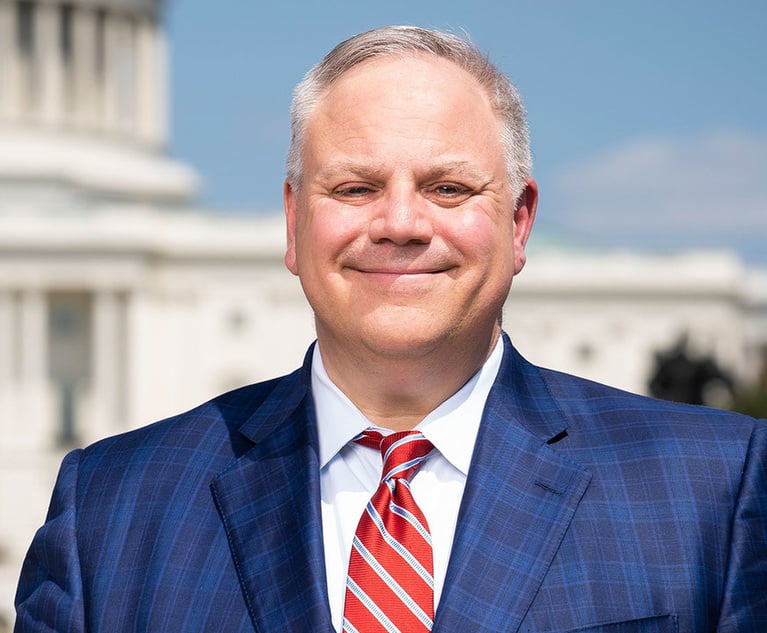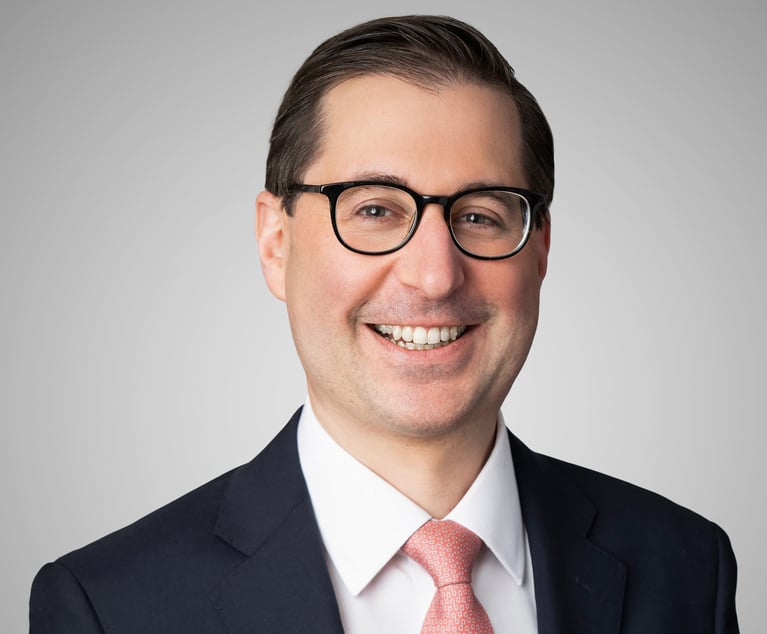4 Stories of Change: Law Firm Innovators Talk the People Behind Tech Change
At ILTACON 2018, four major law firm movers and shakers gave their own personal stories about how innovation is a people problem as much as a tech one.
August 23, 2018 at 12:35 PM
8 minute read
The original version of this story was published on Legal Tech News

Innovation isn't just about technology. True innovation and true change can only occur if people are driving that change. Four law firm leaders brought their personal stories of people driving change in their organizations to ILTACON 2018. Here's what they had to tell at Wednesday's “Stories of Innovation: The Power of Personal Stories to Influence Behavior Change” keynote session.
Get Them in the Room
Wendy Butler Curtis, chief innovation officer and chair of the e-discovery & information governance group at Orrick, Herrington & Sutcliffe.
A few weeks ago, Curtis went and saw Cher in Washington, D.C. Cher's 70 years old, but it took a long time for her to initially break through—at 40, she was doing local dinner shows and was initially turned down for movie role after movie role.
Curtis said she fears every day that a version of what happened to Cher will happen to her: What happens if people don't want to actually embrace the innovation that she's worked so hard to put forth?
“As a leader of innovation pushing change, I worry that nobody's going to come to my innovation show. … Lawyers have incredibly busy schedules, they travel, and they're skeptics—they're taught to question everything.”
Orrick has a reputation as a forward-looking firm, but that doesn't mean that immediately everyone is on board with a new, innovative idea. Curtis said that in one recent case, the only immediate feedback she got from one pitch session was that a third party “thought your voice was annoying.”
Discouraging? Naturally. But she said that when pushing for change, “the most important thing is to get them in the room, even if the big win comes later.” In the above case, for instance, the people in the room came back after a few weeks and agreed to implement the idea.
Now, she's looking to put that thought to practice in all of her innovative endeavors—even if it means locking Orrick employees in a room and making attendance to a hackathon mandatory. But from there, she encourages problem-solving and gives permission to be outrageous and creative. Giving that freedom, she explained, allows the firm's employees to know that innovation isn't just a mantra, but something that can be pushed forth by working together.
Explaining Legal Disruption to Legal
Scott Rechtschaffen, chief knowledge officer at Littler Mendelson.
A few years ago, managing directors at Littler asked Rechtschaffen to get in front of the firm's shareholders and explain how the legal world is changing. But that's easier said than done—how exactly do you tell long-term attorneys that their business model isn't sustainable long term?
Well, take a look at Netflix Inc., he figured at first—sending videos to people's homes was not a new technology, but its business model upended Blockbuster. Kodak Co., Kmart. In other words, the examples of disruptive innovation are out there.
But one problem: Most of them stopped listening at the beginning. “There's something I call attorney exceptionalism. Attorneys think that we're different,” he said. “In fact, we're like the frog in the pot. Hey, it's getting hot, but it's not that much hotter than it was five minutes ago!”
So he tried a different track and asked a few questions: How many people would go to a ball game if you actually had to go to a box office? Or if you had to buy a plane ticket at the airport? Or go to a bank to see your account? Of course, none raised their hands.
“You know why? Because lawyers are just like their clients, and clients are just like their lawyers: We all live online.” Then, he asked the big question: “Why do you think clients will continue to work with us if we don't offer any services online?”
Many attorneys in the room got it. But in Rechtschaffen's mind, there's a bigger question of how attorneys use technology in general. “The problem is, we are asking them to act differently in the office than they act in real life.”
That led Littler to develop what he calls “The Knowledge Desk,” where attorneys could answer any question of a tiny team of researchers internally. That team would then know the best tool to actually answer the question. This reduced the number of firmwide emails by 30 percent, without adding any new staff or software. “I've had attorneys tell me, this is the best KM technology tool I've ever rolled out.”
Bending the Rules With Buddies
Alison Grounds, e-discovery and litigation partner at Troutman Sanders and founder and managing director at Troutman Sanders eMerge.
Long before she was a partner, before she had started eMerge, Grounds was an IP litigator. She thought she was rocking it—but the feedback she received during her fifth year at the firm was that what she was doing was support, or even paralegal work. E-discovery, she was told, wasn't going to put her on the partner track.
So, naturally, Grounds had a bit of a crisis, and pulled up Google about whether e-discovery was actually something worthwhile. She liked her e-discovery work, but becoming a partner was the ultimate goal. And if she couldn't get there, well, maybe she could take up bartending?
“I had the philosophy where if I don't like what I'm doing, I don't have to do it,” Grounds said. “I'll save up enough money and leave at any time.”
Emboldened with that in her back pocket, she went to firm leadership and said that what she wanted to do was entirely e-discovery work, the opposite of what some told her before was the optimal career path. And, perhaps surprisingly, the answer from her mentor was, “Go ahead.”
That didn't mean the path was easy. Despite looking to be a partner in her seventh and eighth years, she was passed over. Then, in her ninth year, she decided to do something bold: She went to firm leadership as an associate and asked for money to start a wholly owned e-discovery subsidiary. And once again, to her surprise, they said yes.
Grounds was named a partner at that time and handed the keys to what would become Troutman Sanders eMerge. Today, the subsidiary has become a major part of the firm, and her team consists of 40 people—a measure of how the firm has continued to support her technology projects.
All it takes, Grounds said, is a little luck, a lot of patience, and a propensity for risk-taking: “I was told 'no' many more times than I was told 'yes.' I had to be connected with the right people at the right times to move forward.”
It's the Relationships, Not the Technology
Jon Grainger, CIO at Freshfields Bruckhaus Deringer.
Grainger was brand new to the legal industry as a whole, and he came in at an interesting time: The firm had just received its largest global mandate with heavy technology usage, at the same time as moving the technology function from London to Manchester.
At the time, the firm's technology function worked under the “Waterfall” method: A sequential process that ensures structure, but also rigidity and lacks the ability to scale up quickly.
“I now understand 18 months into this industry that lawyers love certainty. But there's a problem with the Waterfall method—at the beginning of this global mandate, there was no certainty,” Grainger said.
Using that method to try and accomplish the global mandate started to look like a failure. Business analysts started to get stressed, and when they showed the developing technology to partners about four months in, there wasn't anything that could be shared with clients.
But rather than get down, Grainger decided to look at the problem a different way: “Well actually, this is going to be a huge opportunity to change how we work.”
He talked with attorneys and found there was an alternative to act in a more collaborative way. The team moved to an agile development cycle with smaller, more frequent releases. The goal was to get to a minimum viable product within six weeks.
But to do that, he felt he needed a lawyer to join the team and be a product owner. The tech team assumed this would be a nonstarter, and despite getting silence in the beginning, the firm ultimately decided to grant his request. His group managed to get the first software iteration out in four weeks, and now does a release drop every two weeks.
“They say necessity is the mother of invention. Without that massive mandate, and having no alternative … we used that as an opportunity to move forward,” Grainger said.
And the team has responded incredibly positively, feeling they have more space to innovate than ever before. He quoted one developer as saying, “In Waterfall, you are told what to do. In Agile, you decide what to do.”
This content has been archived. It is available through our partners, LexisNexis® and Bloomberg Law.
To view this content, please continue to their sites.
Not a Lexis Subscriber?
Subscribe Now
Not a Bloomberg Law Subscriber?
Subscribe Now
NOT FOR REPRINT
© 2025 ALM Global, LLC, All Rights Reserved. Request academic re-use from www.copyright.com. All other uses, submit a request to [email protected]. For more information visit Asset & Logo Licensing.
You Might Like
View All

Brownstein Adds Former Interior Secretary, Offering 'Strategic Counsel' During New Trump Term
2 minute read

Weil, Loading Up on More Regulatory Talent, Adds SEC Asset Management Co-Chief
3 minute readTrending Stories
Who Got The Work
J. Brugh Lower of Gibbons has entered an appearance for industrial equipment supplier Devco Corporation in a pending trademark infringement lawsuit. The suit, accusing the defendant of selling knock-off Graco products, was filed Dec. 18 in New Jersey District Court by Rivkin Radler on behalf of Graco Inc. and Graco Minnesota. The case, assigned to U.S. District Judge Zahid N. Quraishi, is 3:24-cv-11294, Graco Inc. et al v. Devco Corporation.
Who Got The Work
Rebecca Maller-Stein and Kent A. Yalowitz of Arnold & Porter Kaye Scholer have entered their appearances for Hanaco Venture Capital and its executives, Lior Prosor and David Frankel, in a pending securities lawsuit. The action, filed on Dec. 24 in New York Southern District Court by Zell, Aron & Co. on behalf of Goldeneye Advisors, accuses the defendants of negligently and fraudulently managing the plaintiff's $1 million investment. The case, assigned to U.S. District Judge Vernon S. Broderick, is 1:24-cv-09918, Goldeneye Advisors, LLC v. Hanaco Venture Capital, Ltd. et al.
Who Got The Work
Attorneys from A&O Shearman has stepped in as defense counsel for Toronto-Dominion Bank and other defendants in a pending securities class action. The suit, filed Dec. 11 in New York Southern District Court by Bleichmar Fonti & Auld, accuses the defendants of concealing the bank's 'pervasive' deficiencies in regards to its compliance with the Bank Secrecy Act and the quality of its anti-money laundering controls. The case, assigned to U.S. District Judge Arun Subramanian, is 1:24-cv-09445, Gonzalez v. The Toronto-Dominion Bank et al.
Who Got The Work
Crown Castle International, a Pennsylvania company providing shared communications infrastructure, has turned to Luke D. Wolf of Gordon Rees Scully Mansukhani to fend off a pending breach-of-contract lawsuit. The court action, filed Nov. 25 in Michigan Eastern District Court by Hooper Hathaway PC on behalf of The Town Residences LLC, accuses Crown Castle of failing to transfer approximately $30,000 in utility payments from T-Mobile in breach of a roof-top lease and assignment agreement. The case, assigned to U.S. District Judge Susan K. Declercq, is 2:24-cv-13131, The Town Residences LLC v. T-Mobile US, Inc. et al.
Who Got The Work
Wilfred P. Coronato and Daniel M. Schwartz of McCarter & English have stepped in as defense counsel to Electrolux Home Products Inc. in a pending product liability lawsuit. The court action, filed Nov. 26 in New York Eastern District Court by Poulos Lopiccolo PC and Nagel Rice LLP on behalf of David Stern, alleges that the defendant's refrigerators’ drawers and shelving repeatedly break and fall apart within months after purchase. The case, assigned to U.S. District Judge Joan M. Azrack, is 2:24-cv-08204, Stern v. Electrolux Home Products, Inc.
Featured Firms
Law Offices of Gary Martin Hays & Associates, P.C.
(470) 294-1674
Law Offices of Mark E. Salomone
(857) 444-6468
Smith & Hassler
(713) 739-1250









